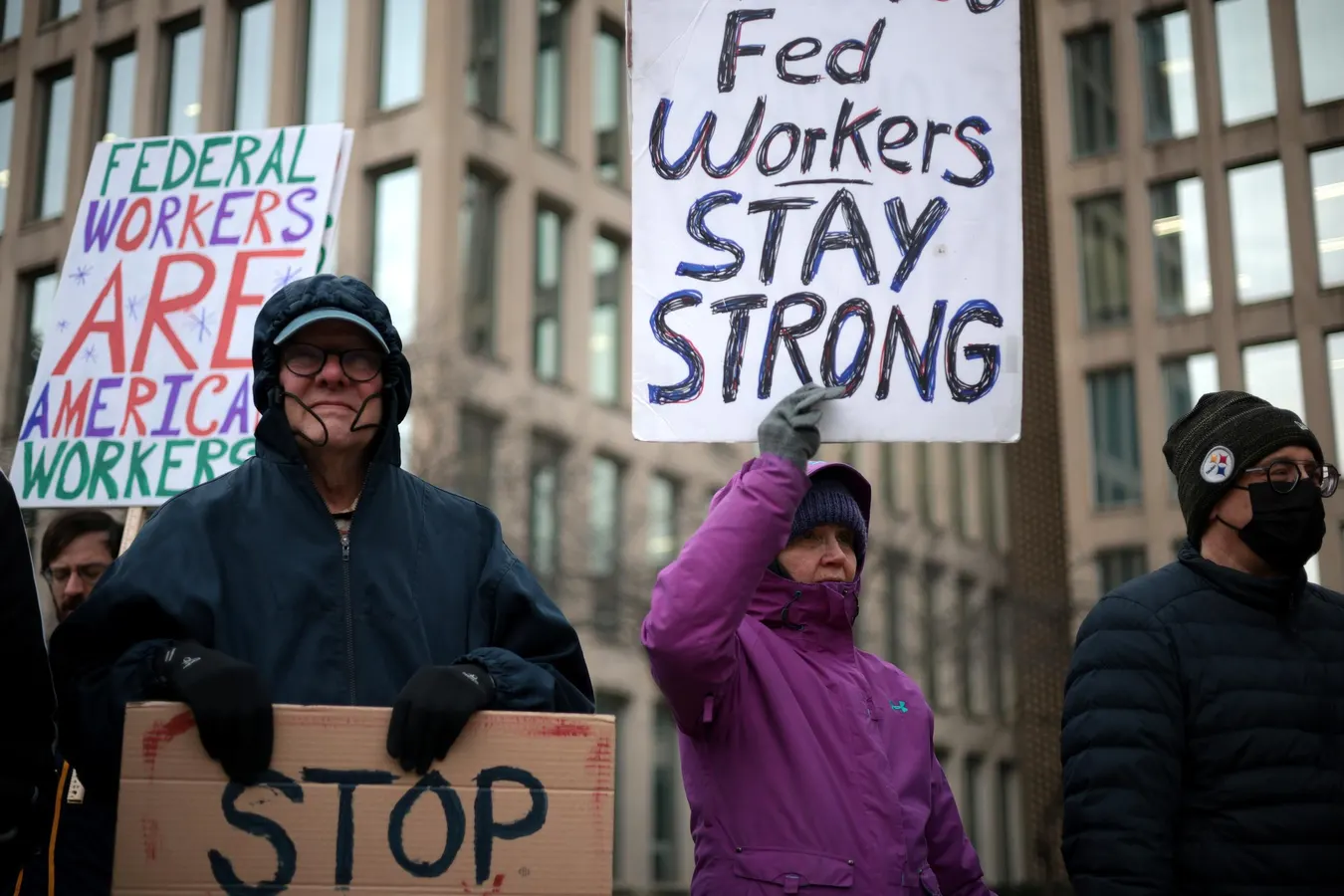By Contributor,Sheila Callaham
Copyright forbes

Protesters rally on behalf of federal workers who have been hard hit during the last nine months. Now they face a government shutdown.
Getty Images
Federal employees are bracing for yet another possible government shutdown as elected officials on both sides of the isle point fingers. Senate Minority Leader John Thune warned Democrats are “playing with fire” by resisting a temporary funding bill, according to Reuters. House Democratic Leader Hakeem Jeffries told the Associated Press that Republicans are driving the government toward a shutdown by refusing to negotiate on preserving health care funding.
Instead of working to bring divided parties together, President Trump has repeatedly blamed Democrats. “This is all caused by the Democrats,” he told reporters earlier this week in the Oval Office. He repeated the accusation today after a failed meeting with Republican and Democratic leaders.
Workers Bear the Brunt
“A government shutdown is not a harmless DC drama,” said Doreen Greenwald, president of the National Treasury Employees Union. “Federal employees in every American community will lose income, through no fault of their own, and in many cases, they will be locked out of doing the work they were hired to do for the American people.”
The hardship is real. During Trump’s 2018–2019 shutdown—the longest in U.S. history at 35 days—federal workers lined up at food banks across the country. Approximately 800,000 federal employees went without pay, causing widespread financial hardship and forcing many to apply for loans.
Federal employees are eventually compensated, but the gap between paychecks is punishing. According to the University of Virginia’s Darden School of Business, the median government worker has about one week’s worth of expenses in checking and savings accounts around payday.
MORE FOR YOU
And the reach is far beyond the Beltway. The Congressional Research Service reports at least 2,600 civilian federal employees in every congressional district, with 96 percent of districts home to more than 4,000. Several states, including California, Virginia, Maryland and Texas, each have more than 100,000 federal employees.
While federal workers must wait for back pay, members of Congress continue collecting their salaries.
A Workforce Under Pressure
Big Bend Park shutdown during Trump’s first term.
The shutdown threat comes at a time when the federal workforce is already thinning. Reuters reported earlier this year that tens of thousands of employees have resigned rather than endure what they viewed as torturous waits during the Trump administration.
Shutdowns only worsen attrition. The Darden Business School study also found that employees impacted by furloughs experience a 31% increase in voluntary turnover compared with unaffected colleagues. Less than 10 percent of the workforce is under 30, according to Office of Personnel Management data and shutdowns often prompt career changes into the private sector, adding to the civil service age gap. For mid- and later-career employees with 10 to 15 years of service, the decision is more complicated. Leaving means forfeiting years invested into the 20-year retirement benefit.
As previously reported, federal job cuts are pushing women out at every career stage, underscoring how workforce reductions don’t affect all employees equally. And, federal job cuts threaten older and Black employees most. Shutdowns compound these inequities, accelerating the federal government’s talent crisis.
Leadership Must Step Up
The public servants who keep government running—from TSA agents to food inspectors—should not be collateral damage in partisan battles. Leadership requires accountability.
Both parties have an opportunity to move past short-term continuing resolutions and into long-term budget solutions. Without it, the nation risks not just another furlough but a continued erosion of public trust and government capacity.
Political dysfunction impacts stability. Unless leadership is willing to negotiate a compromise, workers suffer–and the country does, too. For federal workers, the question becomes whether to stay, exit or be forced out by circumstances beyond their control. And for the rest of America, the question is whether leadership will move beyond the blame game and how We the People can hold them appropriately accountable.
Editorial StandardsReprints & Permissions



